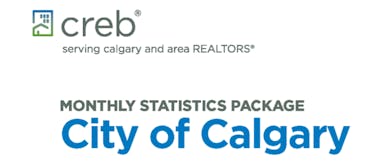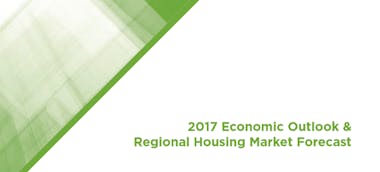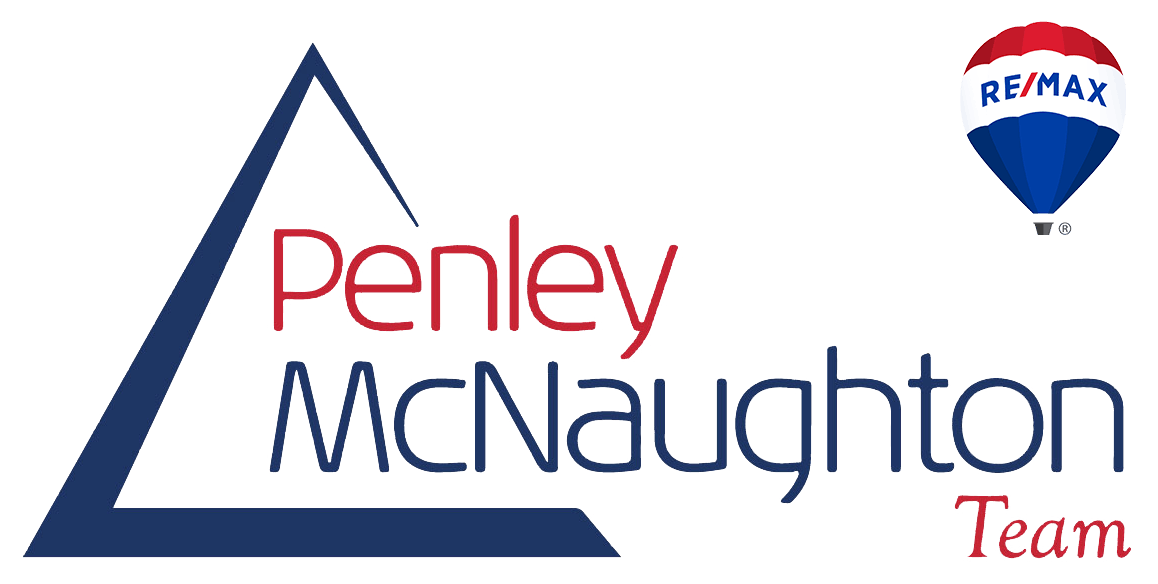A recent RE/MAX survey conducted by Leger found more than one in four Canadian homebuyers report feeling pinched by the stress test, which came into effect in January of this year. However, projections for the spring market show optimism with most markets expected to remain stable or improve. For the full report click HERE. Continue reading →
Mortgages and Financials
Calgary Real Estate Board update for April
Housing market retains momentum in April City-wide prices hold steady as labour market improves.
City of Calgary, May 1, 2017 – Calgary’s housing market continued to show signs of stability in April. With improvements in the labour market and a balanced detached sector, city-wide benchmark prices reached $439,600 in April, similar to the previous month, but 0.90 per cent below last year’s levels. For the full report click HERE. Please do not hesitate to contact Doug, Susan or Kristen with any questions you might have – penleymcnaughton.com.

RE/MAX Western Canada Spring market report
Recovering oil prices, low interest rates, and US approval of the Keystone XL pipeline project have renewed buyer optimism in Calgary’s real estate market. Older properties in prime neighbourhoods in the centre-core of northwest and southwest Calgary are being redeveloped, contributing to a healthy increase in land values in these areas. Optimistic move-up buyers are driving demand for detached, single-family homes, typically in the range of $400,000$550,000. Although there is some activity in the lower-end, the condo market is flat due to considerable inventory. Properties remain on the market for approximately 2.5 months and this is unlikely to change over the course of 2017. Please call Doug, Susan or Kristen anytime with any questions you might have 403-283-7113. We are a family real estate team serving Calgary for 40 years! Click HERE or on photo for the full report.

Advice you can't afford to miss
Join Doug McNaughton, licensed real estate agent in Calgary, AB for 40 years and RBC mortgage specialist, Sandro Mosca, to learn more about investing in real estate! This is the key to your future!
Date: February 23, 2017
Time: 6pm-7pm
Location: Hillhurst RBC branch, 417 10th ST NW, Calgary
RSVP: sandro.mosca@rbc.com

2017 Economic Outlook & Regional Housing Market Forecast for Calgary
Our housing market is moving toward a new equilibrium, but that shift is heavily dependent on stability in the energy sector and overall labour markets. There is also considerable risk from recent government policy changes that could derail expected gains in the second half of 2017. It’s a new outlook this year, but the market risks shouldn’t be overlooked. Please do not hesitate to call us with any questions or concerns 403-283-7113.
Make it a GREAT year,
Doug, Susan and Kristen Team Penley McNaughton at REMAX Central Real Estate in CALGARY
For the entire CREB® forecast, Click HERE.
Mortgage Insurance Rule Change…
AREA remains in contact with REALTORS®, mortgage professionals, lenders and insurers for information that continues to become available as the real estate and mortgage industries continue to prepare for changes to the mortgage insurance rules effective October 17, 2016.
In speaking with lenders, it is our understanding that lenders and insurers are establishing their policies with a limited amount of contact from the federal government other than the government’s backgrounder on the announcement, which states:
| The announced measure will apply to new mortgage insurance applications received on October 17, 2016 or later. This measure will not apply to mortgage loans where, before October 3, 2016: a mortgage insurance application was received; the lender made a legally binding commitment to make the loan; or the borrower entered into a legally binding agreement of purchase and sale for the property against which the loan is secured. Mortgage loans for which mortgage insurance applications are received after October 2, 2016 and before October 17, 2016 are also not affected by the rule change, provided that the mortgage is funded by March 1, 2017. Homeowners with an existing insured mortgage or those renewing existing insured mortgages are not affected by this measure. |
Based on the information AREA received, the AREA Advisory to members stated that ‘Accepted Offers to Purchase signed before October 17, 2016 will qualify under the current rules provided that the mortgage is funded by March 1, 2017‘. Discussions with lenders and the government backgrounder indicate that having a legally binding purchase contract prior to October 17, 2016 may not be enough – the mortgage insurance application may also have to occur prior to October 17 for the current rules to remain in effect.
What does this mean?
- Make sure to contact your lender to learn more about their policies on the application of the new mortgage insurance rules.
- In many cases, we understand lenders will require the mortgage insurance application to occur prior to October 17, 2016 to fall under the current rules.
- Where the application does not occur until on or after October 17, 2016, the new ‘stress test’ would apply, requiring the buyer to qualify for a mortgage at the Bank of Canada posted rate, currently 4.64%, even though they would still receive the contract rate.
The example in the October 7 Advisory illustrating the effect of the new rules continues to apply. Family A is qualifying for a mortgage using the following information:
| Current Annual Family Income | $87,000 |
| Household Debt Payments | $700 per month |
| Property Tax Payments | $3,000 per year |
| Down Payment | 5% |
| Mortgage Rate | 2.49% |
Result:
- Qualifying for a mortgage and applying for mortgage insurance under current rules, Family A qualifies for a purchase price of $450,000.
- Qualifying for a mortgage and applying for mortgage insurance after October 17, 2016, given the need to qualify at the Bank of Canada rate of 4.64%, Family A qualifies for a purchase price of $360,000.
Questions
Speak to their lender and their mortgage professional about your circumstances. Depending on where you are at in your search or the purchase process, the changes may affect your buying power and adjustments may need to be made to your search criteria.
FACILITYCalgary
INTERESTING REAL ESTATE NEWS, other places:
+ Lakeview Hotel Investment Corp. closed the $2.9 million sale of Lakeview Inn & Suites – Edson East, in Edson, AB
+ Morguard Investments Limited are updating Scotia Place in Edmonton; $22 million renovation project starts next month …
+ Rogers Place (new home of the Edmonton Oilers) in Edmonton is finished, public tours and grand opening were a big shindig!
CLIMATE CHANGE / LEED / RENEWABLE ENERGY :
+ Lafarge Canada Inc. reduced the environmental footprint of its Exshaw plant; project began in 2013; capacity increases from 1.3 million metric tonnes per year (tpy) to 2.2 million metric tpy. Technology upgrades reducing sulphur dioxide emissions 60%, nitrogen emissions 40% – and zero water discharge through a $20 million investment in a new kiln #5
+ University of Calgary awarded $75 million research grant over 7 years– part of a $900 million federal government program: Global Research Initiative in Sustainable Low Carbon Unconventional Resources; 270 researchers and scholars at U of C involved in the project; University of Alberta also received a $75 million grant over 7 years
New Summary:
+ Agrium Inc. and Potash Corporation of Saskatchewan Inc. agreed to a merger of equals; combined entity will have 20,000 employees – operating name ‘to be determined’; combined market value is US$27.5 billion. Registered head office will be in Saskatoon, corporate office in Calgary
+ Bank of Canada, warning of risks to growth, announced it will maintain rates – overnight target rate remains ½ of 1%
+ Canyon Services Group Inc. increased its 2016 CapEx Budget by $16.5 million to $28 million
+ Ceiba Energy Services Inc. engaged advisors to conduct a strategic review process
+ ConocoPhillips Canada reported to be laying-off 250-300 staff this week, the majority of them at Calgary headquarters
+ Crescent Point Energy Corp. increased its 2016 CapEx Budget by $150 million to $1.1 billion
+ current energy prices – live link to current Bloomberg energy prices; some WTI price volatility due to GOM storms. Saudi, China and Russia representatives say they’ve agreed to cooperation to tackle the global oil glut to buoy prices – and then subsequently OPEC is talking about increases in production – it seems to my OPEC’s vacillations continue to be hurting their own members as well as everyone else …
+ Energy East Pipeline hearings are adjourned indefinitely; NEB’s hearing panel stepped down. Hearings will resume when new panel members are selected … tic toc
+ EOG Resources Inc. agreed to acquire Yates Petroleum for US$2.5 billion
+ Imperial Oil Limited announced it will be selling off its Norman Wells assets
+ Irving Oil closed its acquisition of the Whitegate refinery near Cork, Ireland
+ Johnson Controls completed its merger with and takeover of Tyco
+ Lone Pine Resources Canada Ltd. and Arsenal Energy Inc. got security holder approval for their combination transaction; completed their combination to form Prairie Provident Resources Inc.
+ memorial service for Hon. Norman L. Kwong in Calgary this afternoon will be live streamed
+ rig counts: western Canada’s fleet of 759 rigs saw 139 active rigs this week, down from 144 the week before; last year/same week was 178; U.S. rig count up 11 this week to 508; last year/same week U.S. had 848 active rigs. Also, U.S. EIA published a report with a great map on U.S. drilling productivity
+ Rockdale Resources Corporation changed its name to Petrolia Energy Corporation
+ Saudi Aramco looking a buying Lyondell’s Houston refinery
+ Shell commenced production at its Stones off-shore GOM project
+ TELUS Health Solutions GP closed its $14.5 million acquisition of Nightingale Informatix Corporation
+ Washington state adopted new rules for pipeline and rail transportation of oil through the state
+ Wealth One Bank of Canada chartered as a Schedule I Bank, founded by Chinese Canadian investors with plans to focus on services to the Chinese Canadian community
+ Yoho Resources Inc. closed its going-private transaction; 1981064 Alberta Ltd. now holds 100%
Click Here for the full FacilityCalgary Newsletter

Study: average Canadian family spent more on taxes than food and housing combined last year
The Fraser Institute calculates that the average Canadian family paid $34,154 in taxes of all sort last year, including “hidden” business taxes that are passed along in the price of goods and services purchased.
The Vancouver-based think-tank estimates that the average bill for income taxes collected by governments was $10,616 in 2015.
The second-biggest category was payroll and health taxes, at $7,160, followed by sales taxes at $4,973 and property taxes at $3,832.
The other categories include taxes on profits, liquor or tobacco, fuel, natural resources and import duties – totalling $7,573.
The study’s authors conclude that visible and hidden taxes would have been equal to 42.4 per cent of the cash income for an average Canadian family in 2015, estimated at $80,593.
By comparison, the study estimates the average Canadian family spent $30,293 on housing, food and clothing last year – about 37.6 per cent of the family’s total cash income.
The Fraser Institute uses its own “Canadian consumer tax index” to track the tax bill paid by a family with “average income.”
“The objective is not to trace the tax experience of a particular family, but rather to plot the experience of a family that was average in each year,” the 11-page report says.
“The ‘consumer’ in question is the taxpaying family, which can be thought of as consuming government services.”
Millennials still plan to become homeowners
Despite a large proportion of young Canadians renting or living with parents, their longer-term goal is to own a home. A new poll from CIBC found that 86 per cent of millennials say that home ownership is important to them although almost two-thirds are either renting (42 per cent) or living with parents (21 per cent.)
“It’s a myth that millennials don’t want to own their own home. In fact our poll suggests that millennials place as much importance on being a home owner as Canadians in other age groups,” says Barry Gollom, Vice President, Mortgages & Lending, CIBC. “Home ownership is an important milestone to many, and that hasn’t changed even though it has become increasingly difficult to get into the market.”
Among all age groups the main reason for wanting to own a home is the financial sense of buying an appreciating asset which will help them save for retirement and although renting is often seen as offering flexibility, 59 per cent of 18-34 year olds said that owning a home offers them more personal freedom.
The mortgage lender’s survey found that just 15 per cent believe that homeownership is not important with 46 per cent calling it a large financial burden.

http://www.repmag.ca/market-update/millennials-still-plan-to-become-homeowners-205039.aspx
First-time buyers likely to feel main impact of new mortgage rule
Larger downpayments will be required by many Canadian homebuyers from next week as a new mortgage rule doubles the amount required by the CMHC for home purchases between $500,000 and $999,000 where the mortgage is more than 80 per cent of the home’s value. The hike, to 10 per cent, will have an effect but one group of buyers is set to feel the biggest pain.
Don Campbell, senior analyst at Real Estate Investment Network says that first-time buyers will be most affected, especially in the hottest markets. “It could certainly prevent them from getting into a market that is overheated,” he told the CBC.
Brian Yu of Central 1 Credit recently wrote that he expected Greater Vancouver prices “have more room to grow with little risk of a significant downturn.” Yu cites young buyers as the hardest hit by the new rule. Again these are probably going to be first-timers.
RBC’s Robert Hogue agrees that the higher downpayment will hit those buyers in the hottest markets, writing that it will “raise the bar to home ownership quite materially in Vancouver.”
- REP News
Global News:
Starting Monday, house hunters will face new rules requiring larger down payments on homes that are listed above $500,000. The changes are expected to have an impact on key real estate markets, but to what extent is up for debate.
“The increase will raise the bar to homeownership quite materially in Vancouver and Toronto,” housing experts at RBC Economics say. “Especially for first-time buyers.”
Announced in December by Finance Minister Bill Morneau, the minimum amount a buyer will have to put down on a home worth half a million dollars or more will increase from 5 per cent of the price to a blended, higher rate: 5 per cent down on the first $500,000, and 10 per cent down on any dollar value above that amount.
Let’s use the example of a $700,000 home. Under the (soon to be old) 5 per cent rule, a buyer would need $35,000 down to qualify for an insured mortgage loan.
On Feb. 15, the new minimum on that same home will jump to $45,000 or an additional $10,000.
The change is the federal government’s first move to cool the housing market since 2012, and is specifically aimed at levelling offsharp price jumps in two centres: Vancouver and Toronto (see chartbelow).
MORE: Latest coverage — The Great Canadian Housing Boom
By targeting higher-priced homes, the majority of the country’s real estate markets won’t see much of an impact, it’s believed.
“Rather than a blunt instrument, this is a targeted measure designed to deter a very small segment of buyers from stretching into the market with a very low equity position,” BMO economist Robert Kavcic says.
The current tightening manoeuvre is “a less aggressive move than those brought in back in 2012,” said Kavcic, who believes the change will have a minimal impact, even on its intended geographic targets.
There will nevertheless be some disruption. Here’s a look at how the new rules will affect homebuyers across the country.
More bad news for Alberta
Alberta cannot catch a break. Already pressured centres like Calgary and Edmonton will feel additional strain from the new rules, experts say.
Average prices in Calgary currently hover just under the half-million dollar mark, meaning “a good portion [of homes] in that already-stressed market will be within the targeted range,” Kavcic said.
Seven in ten new single-family homes sold in Calgary last year were priced above $500,000, according to the Canadian Association of Home Builders. Edmonton will feel the impact too, with more than two thirds of new homes sold in the city last year priced above half a million bucks.
“It’s unfortunate that Alberta home buyers are forced to pay the price for what are seen as problems in other parts of Canada.”
MORE: Alberta bears brunt of January job losses as oil rout cuts across economy
With household incomes already feeling the repercussions of relentless job cuts, bigger down payments are the last thing builders, agents and buyers and sellers want to see.
“It’s unfortunate that Alberta home buyers are forced to pay the price for what are seen as problems in other parts of Canada,” the province’s builder group said.
First-time buyers
Homeowners who are “moving up” to a bigger or more expensive property likely won’t feel the hit of the rule changes, experts say. That’s because they can leverage the proceeds from the sale of their existing home which will more than likely provide a more than sufficient down payment on the next property.
The added requirements will, however, price a larger percentage of first-time buyers out of the market. The changes will also motivate more to seek additional sources to borrow money from.
“First-time buyers at the margin who don’t quite meet the new down payment requirements could be forced to move down the price spectrum, defer purchases or find alternative financing for the bigger down payment – mom? Dad?” Kavcic said.
“Borrowers have increasingly been relying on less regulated non-banks and private lenders, or so-called shadow banking,” Derek Burleton, deputy chief economist at TD Bank said. “Further regulation may only push first-time homebuyer activity to these lenders.”
Shadow lenders don’t have the same stringent lending standards as traditional lenders like banks and credit unions, which could lead some borrowers to take on a riskier amount of debt, experts say.
MORE: The least affordable places to live in Canada are…
Hot markets
As for the country’s two most exuberant housing markets, the effects of the rule changes coming into force next week will either be fleeting and small or “material,” depending on which expert you ask.
In Vancouver, a first-time buyer of an average priced home will have to pony up an additional $22,000 – or 47 per cent more – to get over the hump of the new bare minimum of $69,000. In Toronto, the minimum to qualify for a mortgage on an average home in the city — now north of $625,000 — will rise by a fifth to $38,000, RBC economist Robert Hogue said.
Those calculations are based on the Canadian Real Estate Association’s latest data from December – prices in both cities have climbed since.
“We believe that the change announced [Dec. 11] will have a non-trivial impact on high-priced markets,” the RBC senior economist said.
TD’s Burleton disagrees. “Home price growth in Toronto and Vancouver has been the result of tight supply conditions, in the wake of strong demand. These rules don’t help alleviate supply-related pressures.”
MORE: House prices in Vancouver, Toronto are accelerating at ‘dramatic’ rate
The TD economist said buyers of pricier homes have been conditioned to have larger down payments because of past rounds of mortgage-tightening rules by Ottawa. Most purchasers in Toronto or Vancouver simply come ready to put down 20 per cent or more.
“Hot markets in Ontario and B.C. are being driven by purchasers with larger down payments, whether it be millennials getting help from their parents, move-up buyers or domestic [or] foreign buyers,” Burleton said.
The “bigger picture fundamentals” driving home price gains in Toronto and Vancouver — restricted supply of detached homes, demographic demand, low mortgage rates and inflows of foreign wealth — “remain firmly in place,” BMO’s Kavcic said.





